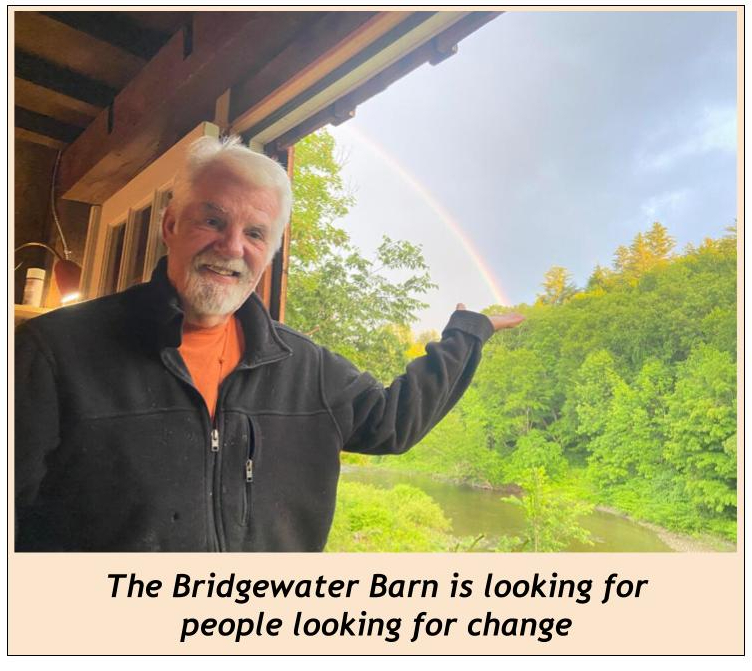by Tom Evslin
Cheap and abundant energy is the answer not only to climate concerns but also to vastly higher living standards for all.
Solar and wind generated electricity has gotten cheaper by orders of magnitude in the last couple of decades; fracking has made oil and gas cheaper (remember the fear of peak oil?) except when we decide to restrict drilling. We know how to build small, even safer, and relatively inexpensive nuclear fission plants. Tidal electrical generation has hardly been tapped but will be. There is tremendous potential for geothermal energy as well as the use of hydrogen produced by hydrolysis. We may well be on a twenty-year countdown to practical use of fusion as a clean energy source.

Our use of energy has become much more efficient. I get the same light from a 6.5-watt LED bulb that I used to get from a 100-watt incandescent bulb. Electric cars require less energy to move them than their gasoline predecessors, assuming an efficient source for the electricity they consume. Modern induction electric motors use much less energy than their predecessors. Heat pumps in all but very cold climates are more efficient ways to both heat and cool than traditional furnaces, radiant electric heat, and earlier air conditioners (which have always been heat pumps). More efficient use of energy reduces the cost of everything we use energy for as well as keeping energy demand and cost lower.
There’s no question that lower cost energy means more use of energy, sometimes even more money spent for energy in the aggregate (this phenomenon is known as Jevons Paradox after William Stanley Jevons who first wrote about it in his 1865 book The Coal Question). There’s also no question that standard of living including adequate food, mobility, clean water, temperature control and most other material things we value goes up with the availability of affordable energy. Climate alarmists are right to point out that people emerging from poverty will use much more energy than they used to when abundant energy was not available to them.
Climate alarmists also worry that world population growth leads to an unrelenting and unsustainable growth in energy demand. That particular Malthusian nightmare should be allayed by the now acknowledged fact that world population is on track to stabilize and then even decline this century, largely because women who have a choice don’t usually choose to have many babies and because more and more women are able to make that choice thanks to education, emancipation, birth control, and affluence. We will all use more energy in the future but there will be less of us.
Researchers Austin Vernon and Eli Dourado at the Center for Growth and Opportunity at Utah State University have written a fascinating paper “Energy Superabundance: How Cheap Abundant Energy Will Shape Our Future”. They meticulously document superabundant energy as a cure for much which ails us. A few examples:
- Water. We know how to desalinate sea water; the only obstacle is the cost of the energy required. Without that obstacle water will be readily anywhere remotely close to the sea. We can also extract water from the air. Really takes a lot of energy but becomes a practical solution inland if energy is cheap enough.
- Think how much more land becomes available if the cost of transportation is near zero (yeah, I know, suburban sprawl). Think how many places become habitable with more fresh water and inexpensive cooling and heating – even if the climate continues to change. Think how much of the cost of building is directly or indirectly the cost of energy.
- Water, of course, is key. But indoor agriculture, so-called vertical farms, are practical where land is scarce if artificial light is cheap enough to compete with sunlight. Indoor marijuana growers, who use enormous amounts of electricity, already know that. But cheaper electricity is required for crops which don’t command as high a price.
- The Environment! Given superabundant energy which does not add greenhouse gas to the atmosphere, we can use that energy to remove atmospheric CO2 and either sequester it or use it to make plastics or netzero fuels. Once CO2 removal is cheap enough, there need be no net addition to greenhouse gas in the atmosphere when fossil fuels are used wherever they are the most practical alternative. Problem solved!
How do we get to that nirvana of superabundant energy. The authors of the paper say:
“To achieve this level of energy abundance, we need to remove the obstacles to building in the physical world. Power plants and transmission lines continue to be plagued by red tape from environmental review requirements, the siting process, and veto players at the local, state, and federal levels. Transportation infrastructure that is needed to allow us to step into our newfound energy prosperity suffers from similar issues. Smart policies like congestion taxes that could increase throughput and therefore increase demand for transportation languish because of a lack of political will. A high-speed tunnel that would connect DC and Baltimore in 15 minutes is languishing in environmental review. New aircraft types face regulatory obstacles at the Federal Aviation Administration.
“The Nuclear Regulatory Commission was spun off from the Atomic Energy Commission in 1975. In the entire history of the agency since then, it has never approved a reactor license from start to finish, from initial application to beginning of operations. Without reform, the obstacles to miniaturizing nuclear technology to achieve a portable source of high-density power are significant.”
My hope is that 2023 will be the year when the quest for superabundant energy and all its benefits replaces climate hysteria as a driver of public policy and private investment. We’d get a long way along the path if we fix our “build nothing never” permitting process. Happy New Year.
The author, an author, entrepreneur, former Vermont state cabinet officer, lives in Stowe. He founded NG Advantage, a natural gas truck delivery company. This commentary is republished with permission from his blog, Fractals of Change.
Categories: Commentary






I am appalled that you don’t give any consideration to the human genocide going on around you and just think YOU will have more room and energy now that a lot of other people have been slaughtered by the clot shot
Wind and solar are both nothing but destructive junk. Get your head out of that black hole of propaganda. You sound like a democrat.
Read The Long Emergency by James Howard Kunstler.
Understand that what Tom describes are novelties and fairy tales.
Peak oil is real and there is no true alternative. There are lucrative lobbying interests however.
There are all ready underground tunnels and cities – oops, not supposed to know about the secrets of the priviledged and their plans.
Imagine that ! All those advancements in energy generation and conservation without meddling, and imposition of mandates by “big brother”. Just proof of what we can do without their “help”.
Nuclear power is best, and water power dams are great.
Scare Crows belong in the corn field
Tough talk? Look at the opposition